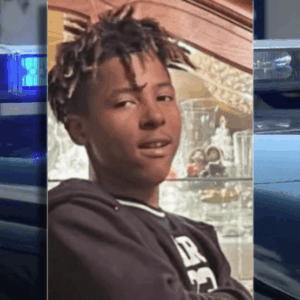LAKE MINCHUMINA — I still call them Twitterpats and kidlets and chickies, but after years of raising poultry for meat I no longer feel as deeply attached to each fresh batch of chicks when they arrive on the mail flight from Fairbanks. I’ve seen too many little birds die of various causes — illness, exposure, predators, over-eager dogs or escaping to disappear into the wilderness.
Several factors concerned us this year. A new chicken pen hadn’t been thoroughly tested; it lacked a bird-proof roof and we saw eagles perched overhead before the chicks even arrived. An unusually hungry flock of ravens had showed up during the spring, teasing dogs, picking fish from the cooking dog pot, leaving white splatters and being general pests. And a weasel had moved in, alternating between the fish cache and the dog-food shed.
We didn’t mind the weasel because they’re so effective at reducing vole populations and they’d never bothered our poultry. But the ravens concerned us. We try to keep a clean camp, giving them no reason to loiter, but as summer began one or two troublesome birds continued hanging out. They were small, too, reminiscent of the stunted ravens we see around Fairbanks dumpsters and malls. They knocked over potted plants waiting for transplanting, absconded with seed potatoes, plucked leaves off a store-bought iris, and (Miki swears) they tipped over a wheel barrow.
Anyway, my chicks. I bought 15 Cornish cross chicks from Alaska Feed — efficient, fast-growing birds that we could butcher in six to 10 weeks depending on whether we wanted fryers or roasters. With 350 pounds of feed we’d hauled from the mail plane on the winter trail, we could grow these chicks to a good size. Five days old when we boated them home, the chicks were growing fast. A couple days in a cardboard box under a heat lamp allowed their feathers to leaf out enough to cover most of their bodies, making me confident about putting them outside on warm afternoons.
I glanced out the window periodically to make sure no predatory birds or loose dogs were threatening my investments, and packed them inside each evening. The chick’s second afternoon in the pen is always my favorite. Instead of being shocked by the strange open space, they’re thrilled to be back, scampering, fluttering and fisticuffing around the grass and leaves. I sit on a bucket feeding them mosquitoes or letting them pluck the bugs off my hands and shins.
But that second day after supper I was dismayed to see the scruffy little raven perched above the pen with something small and fluffy in his big beak. It flapped away as we rushed out to anxiously peer through the fence.
Eight headless chicks lay dead on the ground, their poor noggins wilting nearby. The raven had snipped off the heads with its beak, killing as many as it could before pausing to secure its bounty. Five little birds huddled in a corner out of reach of the murderous black beak. Two had vanished, hauled off by the triumphant corvid.
I refused to grieve for my little twitterpats, but gloomily packed the surviving remnants in their box and put the dead bits in a bucket to cook in the daily dog pot.
After two more days indoors to grow bigger, my diminished flock was ready for another try in the pen, which I reinforced with metal roofing. By now their feathers had grown enough to cover most of their bodies, so I left them outside overnight with fresh warm bedding chips in their box and a couple chemical hand warmers tucked underneath for warmth.
That evening the raven spent quite awhile hopping madly around the roof searching for an entrance, but I felt confident I had it flummoxed. The morning after the chicks’ first night out, while Miki was checking the dogs and horses I strolled down to check my birds.
The first thing I saw was four limp bodies scattered dead in the grass. These victims had their heads attached, but their throats were ripped out. Scanning for the last chick, I spotted the weasel. It ducked through an inch-and-a-half tall gap under the fence and darted halfway to the nearest bundle of feathers before noticing me. It paused, rose on its hind feet like a curious bear to give me a body scan, then darted to its prey, seizing it by the neck and pulling with ferocious little jerks that jarred the weasel’s entire body. My bird outweighed the mustelid by a factor of three, but it still managed to yank the carcass slowly toward the fence.
The missing chick had vanished; the weasel must have already somehow squeezed it under the fence. I fetched a camera and spent several minutes documenting the crime, then glumly salvaged the chicks for dog food, relinquishing the missing one to the weasel. “No chickens this year!” I reported to Miki.
We hadn’t had a mass casualty event for years, but as the next few weeks played out, I found myself almost grateful to be relieved of poultry for this year. We already expected a busy summer with previously-scheduled appointments and commitments. More complications cropped up, from cold weather delaying the garden to setbacks cutting firewood, unexpected visitors, threatening wildfires and helping deal with ongoing community problems.
With the summer turning more harried than expected, it seems like a good year to leave the chicken pen empty. I will miss little beaks snipping mosquitoes off my legs and the juicy chicken dinners, but it does take time and commitment to see the project through.
The 350 pounds of feed should keep until next year, and hopefully by then the ravens and weasels will have moved on.





